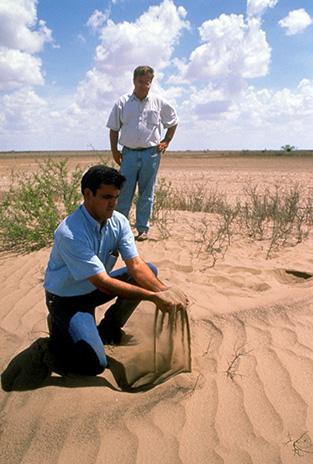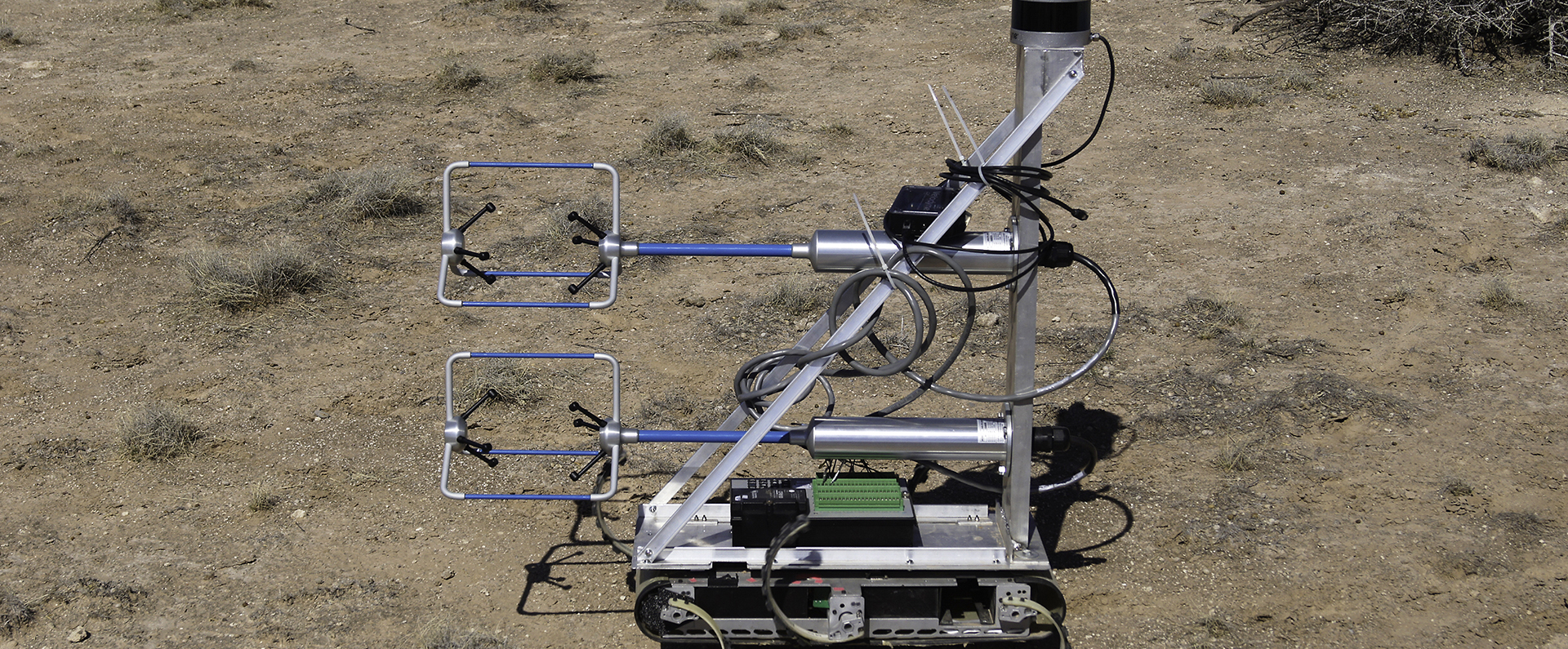Robotic Researchers Brave the Elements

Sandstorms can make collecting wind erosion data a painful experience for ARS researchers who get pelted while studying ways to protect rangeland used to graze cattle. One solution to the problem could come in the form of a six-legged robot that mimics the movements of a cockroach—creepy to see perhaps, but ideal for navigating sandy, rugged terrain and collecting data beyond what a human could comfortably or safely endure. ARS researchers, with University of Pennsylvania collaborators as part of a National Science Foundation-funded project, are exploring the potential of robots to take on hazardous duties related to studying global threats, such as wind erosion of soils and the expansion of deserts. In this instance, the ARS-Penn team is evaluating a robot prototype known as ""RHex" to carry instrumentation that collects data on wind speed and sediment deposition in western rangelands, where changing weather patterns can limit the available grasses for cattle to eat. Ultimately, data generated by RHex the robotic researcher will help its human counterparts better understand and manage the effects of windstorms on the soils and vegetation of millions of acres of rangeland.



